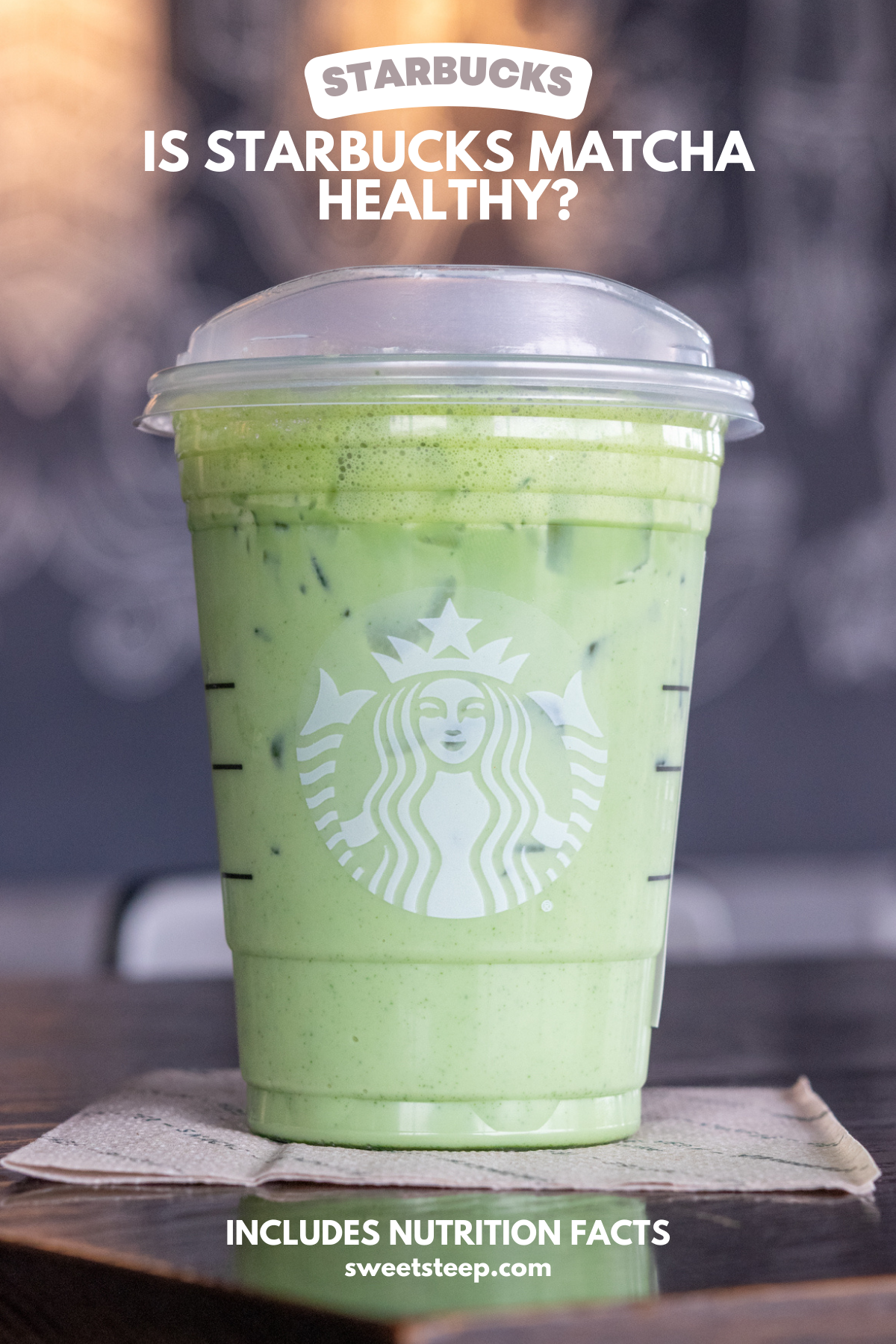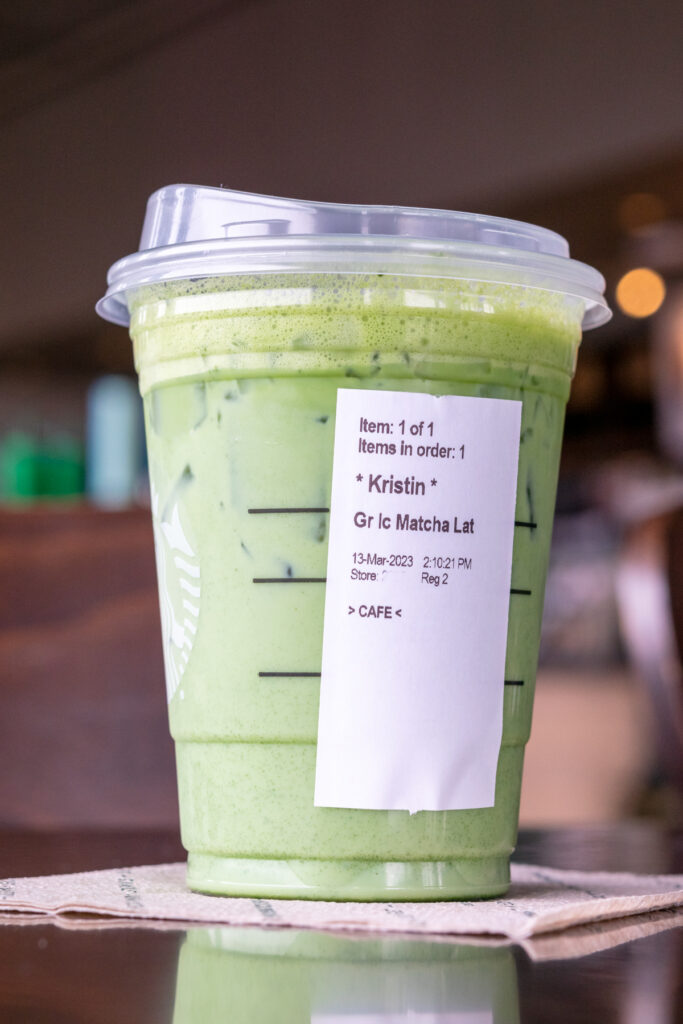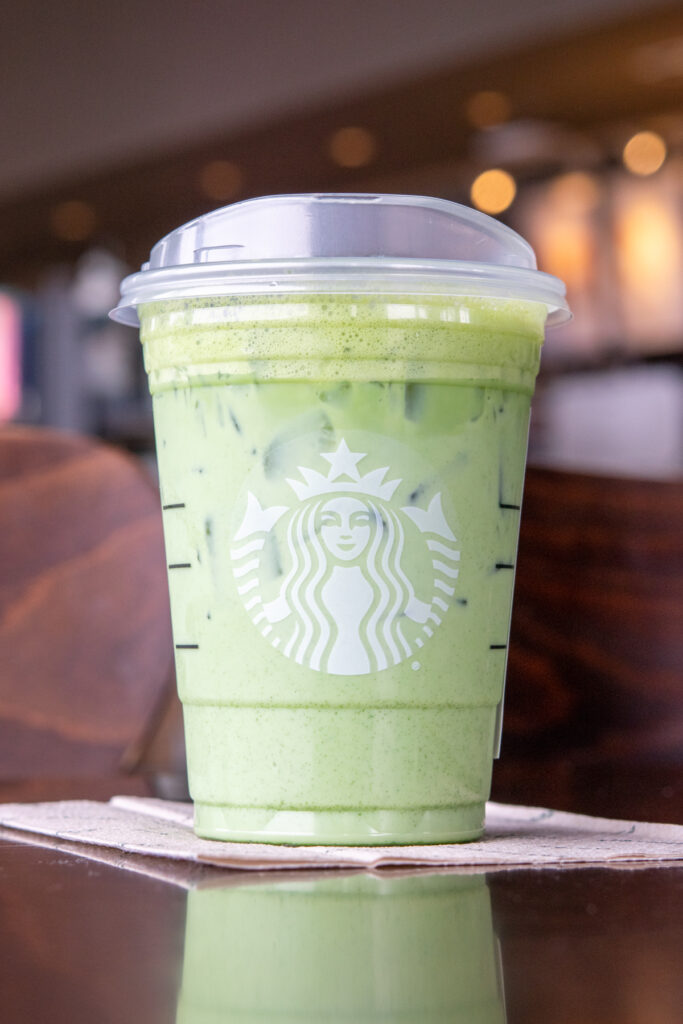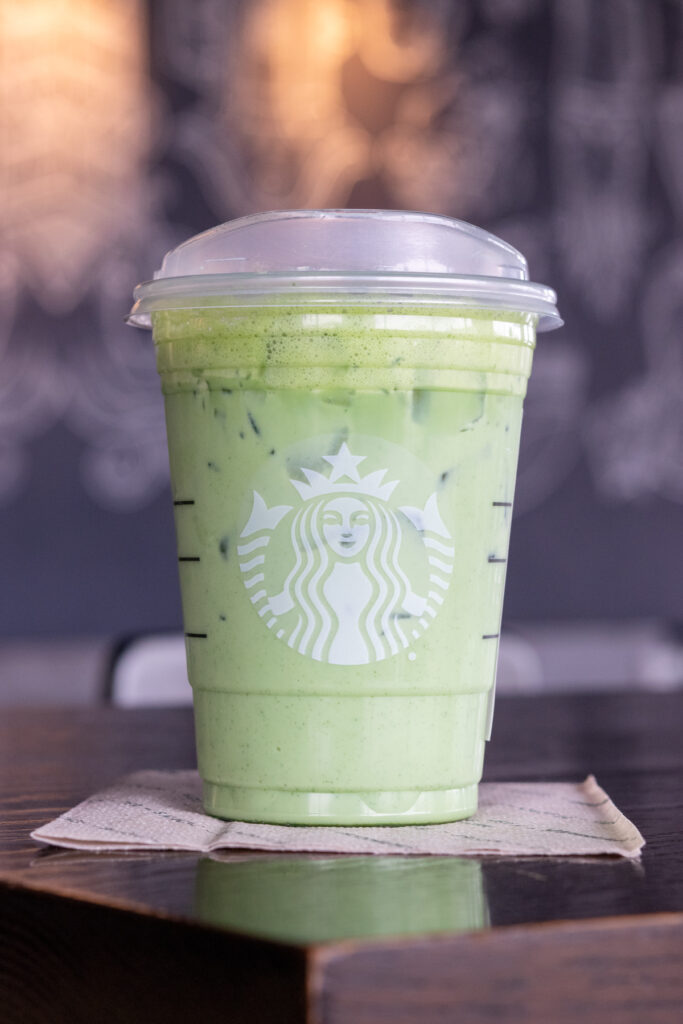
As a tea drinker, I’ve certainly had my fair share of Starbucks matcha lattes.
My favorite is the hot matcha latte with perfectly steamed, frothy milk.
It’s warm and cozy and provides the ideal caffeine boost–not too much, not too little.
But is Starbucks matcha healthy?
Matcha first appeared on the Starbucks scene in 2005 as a special edition drink called the Green Tea Latte.
In 2006, Starbucks added green tea matcha lattes to the official menu, and with that move, launched matcha into mainstream American culture.
Matcha has always been known for myriad health benefits, but how do Americanized Starbucks matcha drinks measure up?
Let’s take a look.

Health Benefits of Matcha
Matcha green tea is an antioxidant powerhouse.
The numerous health benefits of matcha include promoting weight loss, regulating hormones, protecting heart health and providing immune-boosting activity, among many, many more.
Unlike regular green tea that is steeped in hot water and removed, matcha is finely ground green tea that is consumed.
Because of this, matcha has significantly higher levels of antioxidants and nutrients compared to a traditional cup of green tea.
Is Starbucks Matcha Good for You?
Starbucks matcha is not particularly healthy at all. A grande matcha tea latte packs in 240 calories and has an astonishing 32 grams of sugar!
While 66% of the sugar is naturally occurring in the milk portion of the latte, the remaining 34% of the sugar comes from the added sugar in Starbucks matcha powder.
Unlike traditional matcha, which is just finely ground green tea, Starbucks matcha powder is a blend of sugar and ground Japanese green tea.
In fact, sugar is the number one ingredient in this sweetened matcha mix.
This means, matcha at Starbucks actually contains more sugar than matcha!
In my opinion, any health benefits from the nutrients in the Starbucks matcha blend are offset by its extreme sugar content.
What’s in Starbucks Matcha Drinks

Matcha drinks at Starbucks combine scoops of sweetened matcha powder with milk.
Unless you ask the barista otherwise, matcha lattes are made with 2% dairy milk by default.
And the standard type of milk for the Matcha Creme Frappuccino blended beverage is whole milk.
The Starbucks menu also features a lesser-known matcha lemonade beverage. As I’m sure you guessed, it’s a mix of matcha powder and lemonade.
The amount of matcha that goes into each drink depends on the size. For instance tall lattes get 2 scoops of matcha whereas grande lattes are made with 3 scoops.
Starbucks Matcha Nutrition Facts

Even though traditionally prepared matcha is nutritious, Starbucks matcha latte drinks contain a lot of milk and sugar.
Here is a breakdown of some key Starbucks matcha latte nutrition facts so you can determine if it meets your dietary goals.
Make note, iced matches lattes contain fewer calories and sugar than hot lattes of equal size since they are prepared with a little less milk to make room for the ice.
Calories
On average, a hot Starbucks matcha latte has 15 calories per fluid ounce and the iced version has 12 calories per ounce.
In total, a hot 16-ounce grande contains 240 calories and an iced matcha latte has 200 calories.
For comparison, an iced matcha from Starbucks has nearly double the calories in a Pink Drink.
| Starbucks Matcha | Calories (Hot Latte) | Calories (Iced Latte) |
| Short | 110 | N/A |
| Tall | 190 | 140 |
| Grande | 240 | 200 |
| Venti | 320 | 280 |
Sugar Content
There are two sources of sugar in a Starbucks matcha latte: sweetened matcha powder and milk.
The sugar in the dairy milk is naturally occurring, while the sugar in the matcha is all added.
If your health goals include reducing the amount of added sugars in your diet, then you should cross Starbucks matcha lattes off your list of healthy drink options.
| Starbucks Matcha Latte (Hot) | Total Sugars (g) | Sugar from Milk (g) | Sugar from Matcha (g) |
| Short | 14 | 10 | 4 |
| Tall | 24 | 15 | 9 |
| Grande | 32 | 19 | 13 |
| Venti | 43 | 25 | 18 |
How to Order a Healthier Matcha Latte at Starbucks
There are two ways to order a healthier Starbucks matcha drink:
- Order the drink with less scoops of matcha
- Switch the type of milk
Ask for Less Matcha Powder
Starbucks does not have sugar-free matcha. The only way to reduce the amount of added sugar is to ask for less scoops of matcha.
Per scoop, Starbucks sweetened matcha blend has approximately 13 calories and 4.5 grams of sugar.
The number of scoops for each drink size is readily available on the Starbucks app.
Switch the Type of Milk
To get a healthier matcha latte with fewer calories and less total sugar, substitute the standard dairy milk with almond milk.
Starbucks almond milk is the healthiest plant-based milk they offer and has more than half the calories as 2% dairy milk.
Additionally, the amount of sugar from milk is cut by more than half when the switch to almond milk is made.
Here’s a detailed look at Starbucks Almond Milk Nutrition.
Do international Starbucks locations have sugar-free matcha?

In the United States, Starbucks prepares all its matcha beverages with pre-blended sweetened matcha powder.
However, this isn’t necessarily true for other worldwide Starbucks locations.
For instance, matcha lattes from Starbucks Canada are made with pure matcha powder and the drink comes sweetened with liquid cane sugar.
Since the sugar is added after-the-fact, it can be reduced or removed altogether.
And a matcha green tea latte at a Starbucks UK begins with scoops of pure matcha. Sweetener can be added as desired.
Starbucks Japan takes matcha to another level. Their matcha lattes are prepared with carefully selected matcha that’s combined with milk and wasanbon sugar.
At Starbucks Reserve Roasteries in Japan you can even get the finest grade of matcha, Uji matcha, freshly ground in the store.
This stone mill matcha is offered as hot and iced lattes and even as an affogato.
Bottom line, Starbucks matcha lattes around the world are much healthier than the blend offered at U.S. locations since the customer can control the amount of sweetener added to the matcha drink.
Want to save these Starbucks ordering tips for later?
PIN it to your Pinterest board!
Related
- DIY Starbucks Iced Matcha Green Tea Latte Recipe
- Iced Chai Latte with Matcha Cold Foam: A Starbucks Duo Worth Trying
- How to Order a Starbucks Pink Drink with Matcha Cold Foam
- Quick & Easy Matcha Lemonade like Starbucks
- Starbucks Matcha Green Tea Frappuccino Recipe

